Lovebirds live mainly in Madagascar and nearby islands, but free and vocal birds feel great in an urban environment. This article will cover general parrot care tips on choosing the right feathered friend and the conditions for keeping and caring for it at home.

This species got its name from the popular legend that if one parrot dies, the other partner dies sadly.
Lovebirds are different in that they live together and do everything together, but if one dies, the other can only leave the house for a while and later return.
At home, you can keep birds that were born in captivity. Wild and free lovebirds will not take root in a cage or confined space. The average lifespan of a parrot is 10-15 years.
How to choose a lovebird
You should only purchase birds from professional breeders or pet stores. Don’t rush to buy a bird daily – it’s better to go to several places and get detailed advice on all your questions.

Lovebird age
When you choose a parrot, please pay attention to its age. The chicks will quickly get used to their new owner, but the adult may stay tame.
Babies most often have a black color on the bridge of their noses. This is the main distinguishing feature, although it may be absent in some species.
Gender of the lovebird
The easiest way is to check the bird’s sex with a consultant in a store or a breeder since this is very difficult for a non-professional to do. However, it is essential to know the main differences so as not to doubt the specialist’s competence.
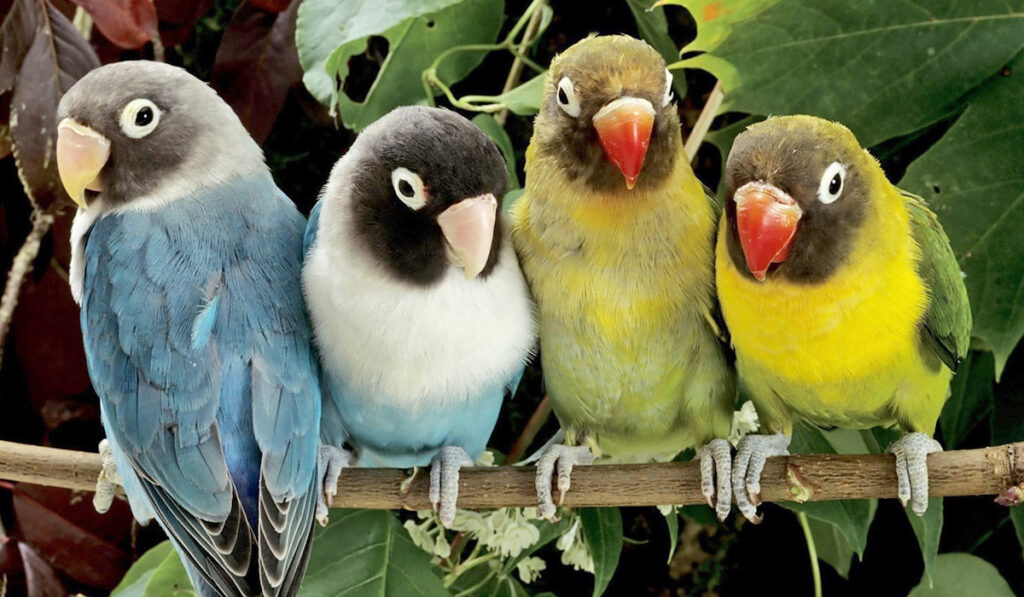
Head structure: A boy’s parrot has a more elongated head and a flat forehead, while girls have a high forehead but a smaller head.

Beak: Girls have a predominantly rounder beak and a dull color. In boys, on the contrary, the beak is brightly colored and has a sharp shape.
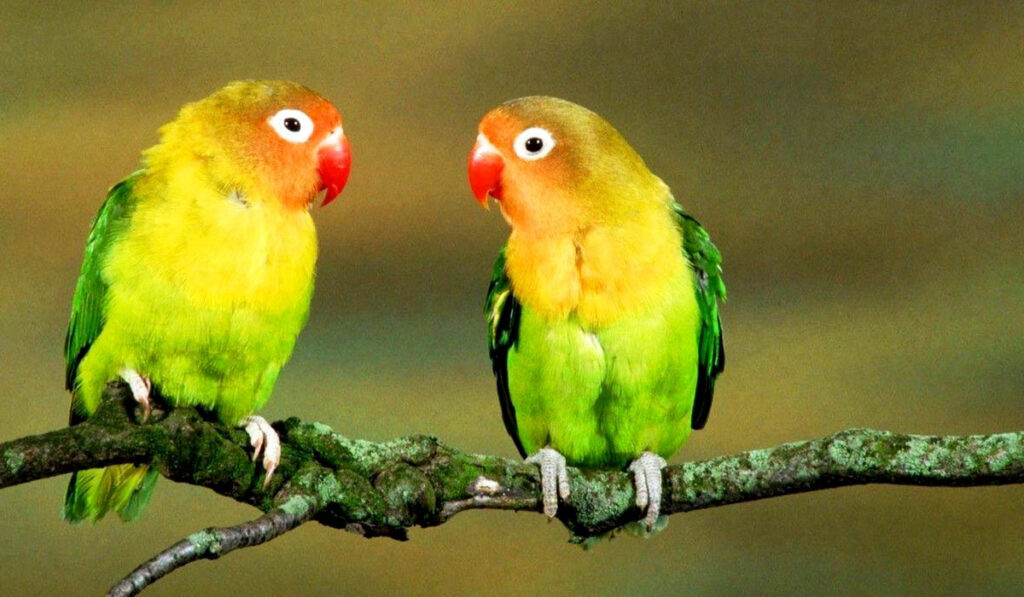
Behavior: Girl parrots often tidy themselves up (wash themselves, clean their feathers) and react more actively if a new foreign object appears in the cage.
Health of lovebirds
A physically healthy and developed bird should be active and have bright and even plumage. But feathers are not the leading indicator. Birds only have bright outfits once they are six months old since the first period of active molting occurs at 4-6 months.
If the bird does not react to your appearance, sits with its eyes closed, or is ruffled, it is likely sick or too small and must be nursed with additional food.
Additional accessories for lovebirds
To make your bird feel comfortable, purchase the following “add-ons” for it.
Cell
Please remember that size is essential when choosing a cage. The larger the cage, the more spacious the bird feels. Also, could you read the article about what a parrot needs in a cage?
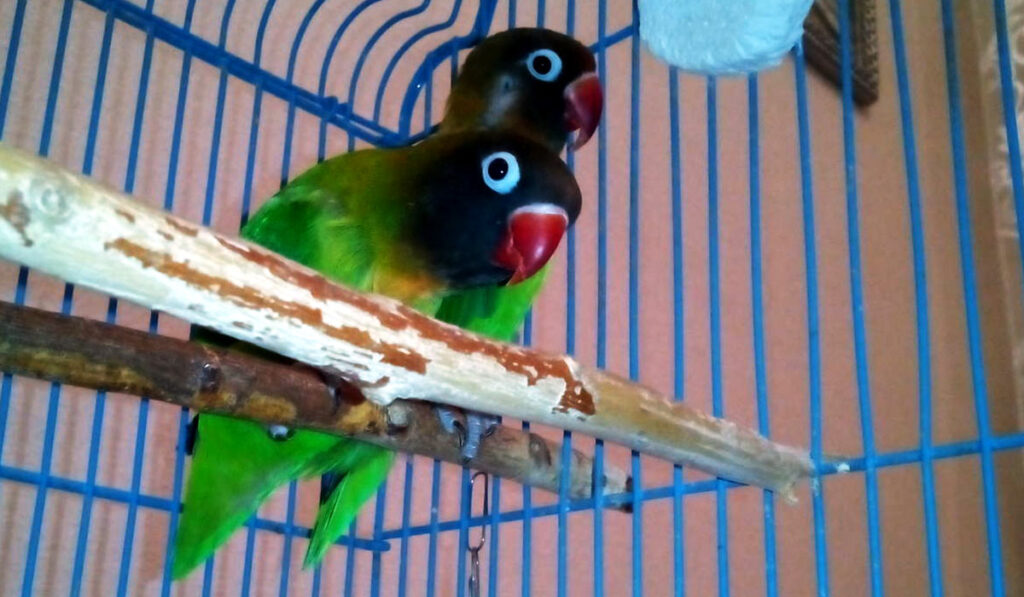
The cage should comfortably accommodate dishes for food, water, and several perches.
Feeders
It would be best to choose metal feeders since your feathered friend can chew plastic ones.
Baths for bathing
Lovebirds love water and do not mind taking water procedures once again.
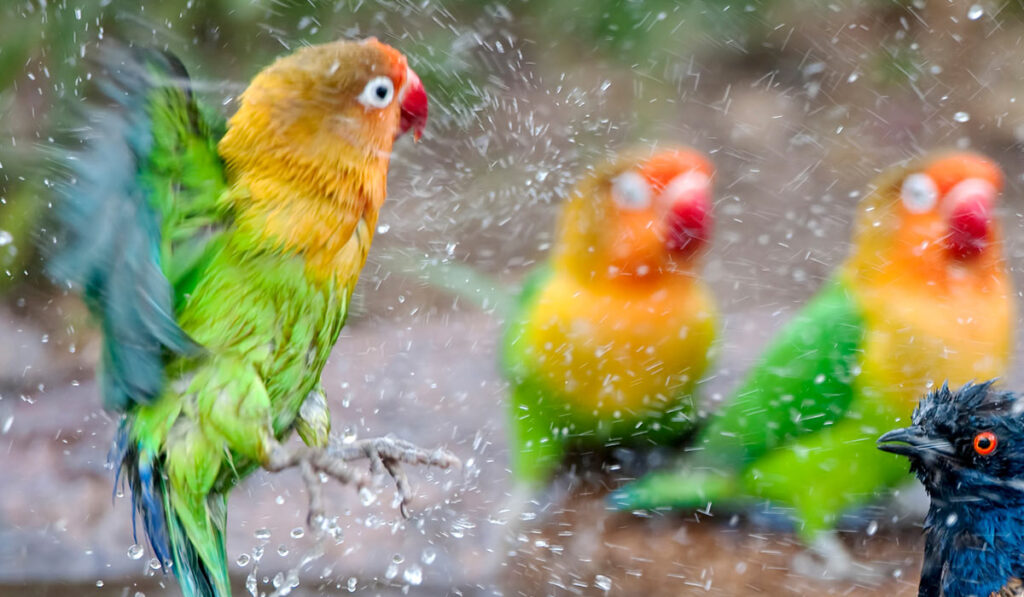
You can have a separate bath and bathe your pet when you let him fly around the house, or install the tub directly in the cage.
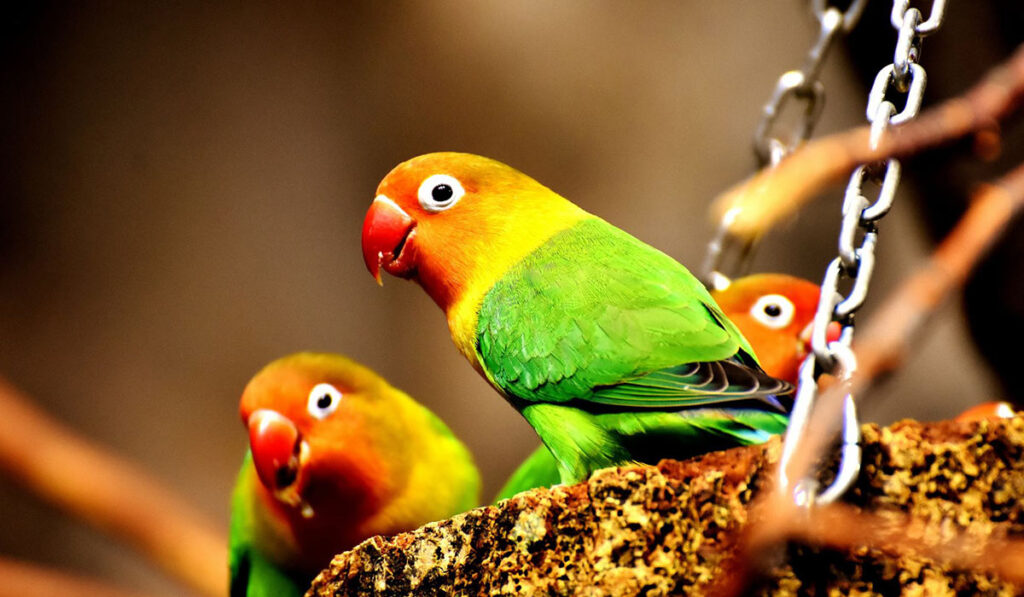
Additionally, you can purchase various toys: pendants, balls, small mirrors, and swings. They should be placed in moderation without overloading the cage space. The bird must move freely and, if necessary, be able to spread its wings.
To please your pet with various educational toys, purchase several types and change them every 1-2 weeks.
Nutrition of lovebirds and selection of food
Lovebirds have a speedy metabolism. They need at most 3 hours to digest food. Therefore, they will eat often, and their diet should be varied in micronutrients.
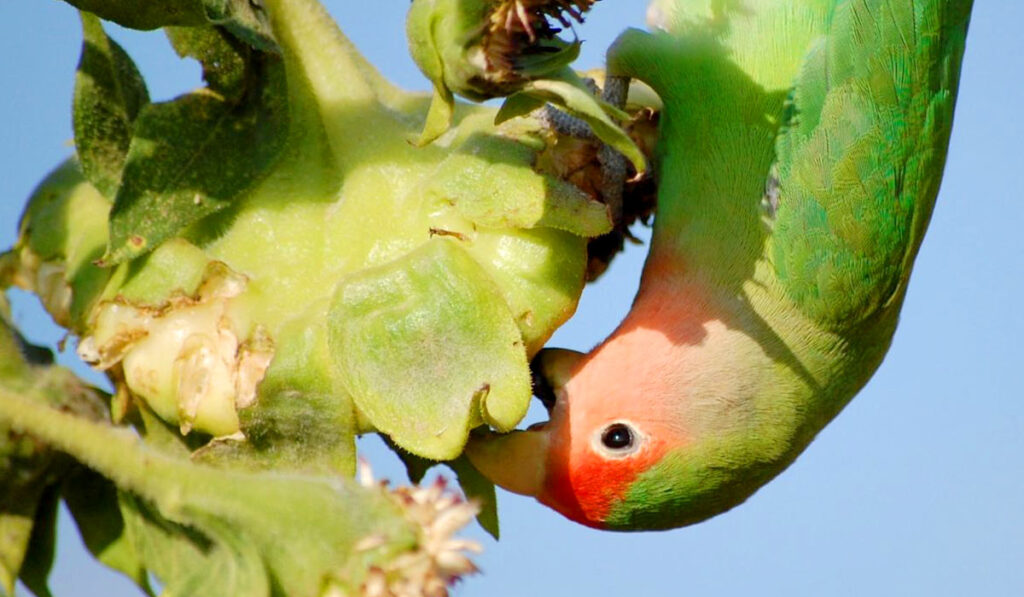
Parrots’ diets must contain food of plant origin. You can buy a ready-made menu or “assemble” it yourself by grinding seeds and dried fruits in a coffee grinder or blender.
So, food for regular budgies is unsuitable for the lovebird species. For them, you should choose exceptional food, or the package should be marked “for medium-sized birds.” Millet should predominate in the grain feed. This is the basis of lovebird nutrition; birds can get sick without it.
In the future, when changing food, introduce the new product gradually – a sudden change in food may cause stomach problems for your parrot.
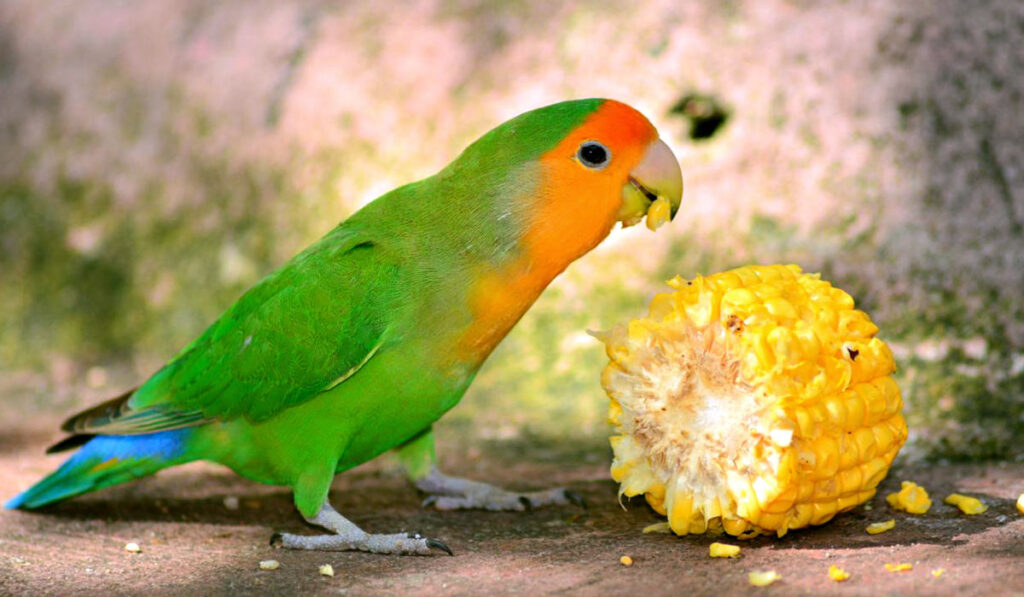
Sometimes, adding nuts and corn to food is acceptable. But do not abuse this, as their excess can cause obesity in birds.
Food should be at most 3-4 teaspoons per day.
Parrots also love greens. Try to include it in the diet as often as possible, but if you have indoor plants, ensure the bird does not feast on them. You can offer the bird leaves of currants, dandelions, and clover in any quantity.
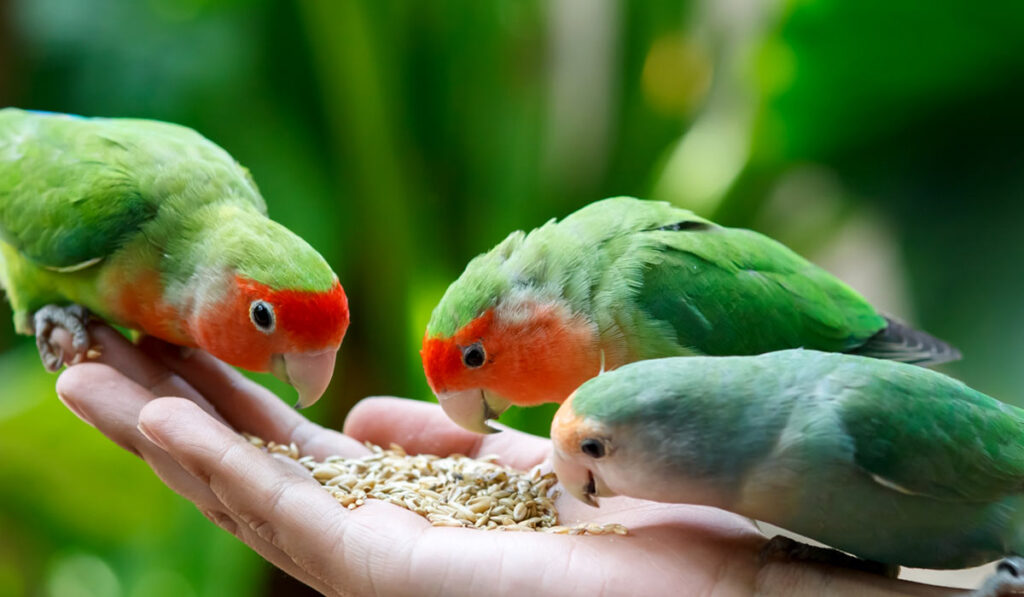
Additionally, it will be helpful to treat your feathered friend with food chalk, vegetables, and fruits. These can be placed in the cage bars or crushed into food.
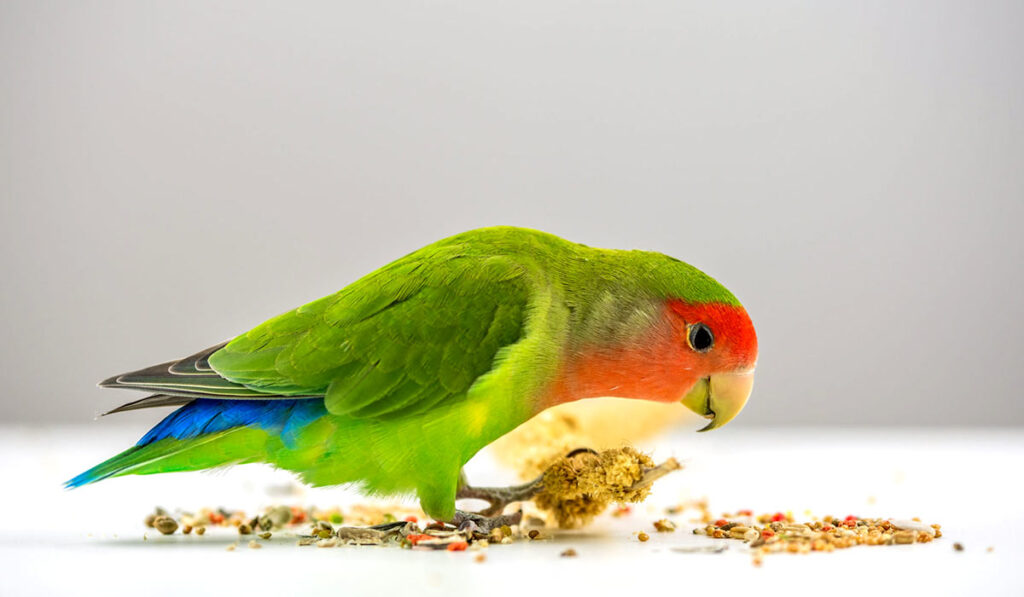
Parrots are fond of cucumbers, pears, apples, and various berries. They are also saturated with useful microelements that will benefit them.
Lovebird games and training
Many people keep parrots for one purpose: to teach the birds to speak and imitate their owners’ voices. We will tell you the basic rules that will speed up and simplify learning.
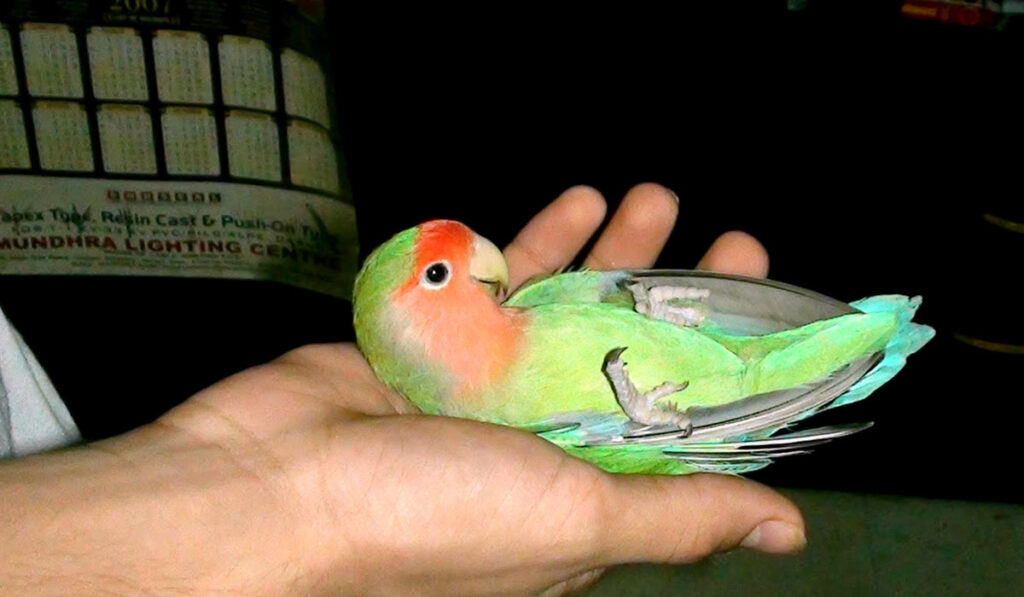
So, for your chick to speak, you should remember that:
- The parrot perceives women’s and children’s voices best.
- Training is required to be carried out every day at the same time, preferably before feeding the birds.
- The workout duration should be at least 10-20 minutes.
- Don’t try to teach your parrot whole phrases at once. Start with simple letters and syllables. They need to be repeated several times and always with the same intonation. Use a voice recorder if you tire of patiently repeating the same thing. Write down the necessary letters/words and turn them on by placing the sound source near the cage.




